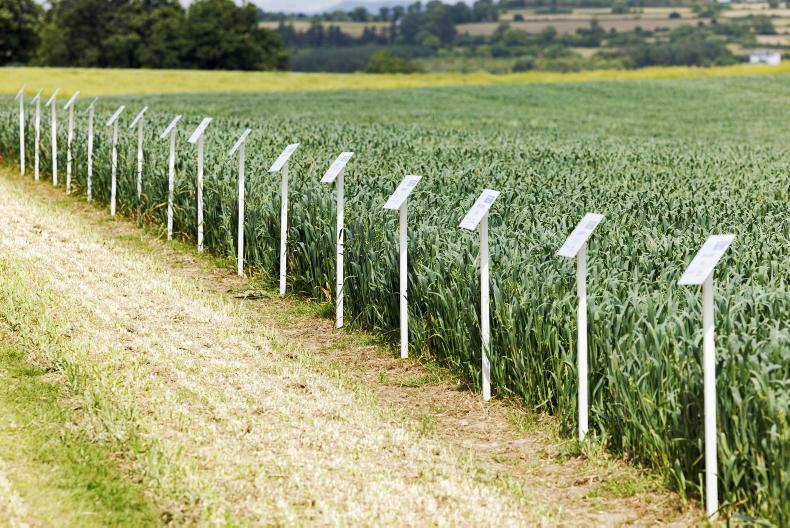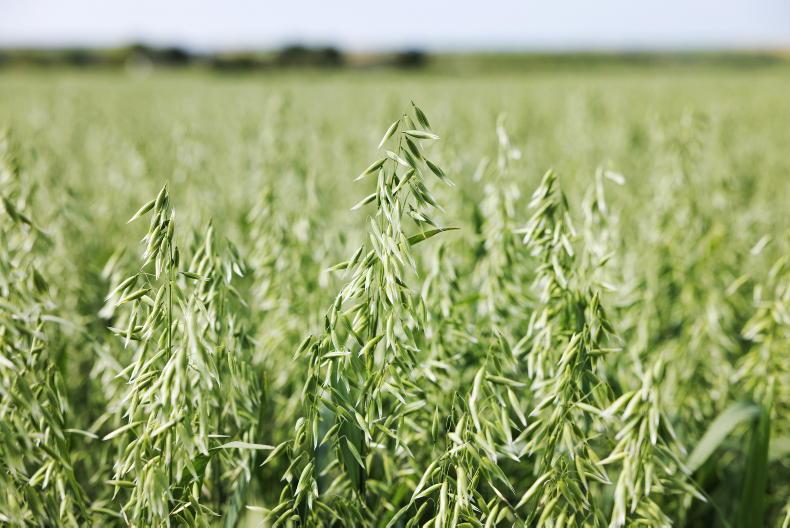With the shift in consumer perceptions towards a more healthy diet, coupled with the need for increased rotational resilience, the benefits of oats as a crop and its current acreage is expected to rise.
However, a clear knowledge gap remains in regards to oats agronomy and supporting evidence-based decision-making. What's more, yield instability and grain quality are a growing concern among the stakeholders.
Teagasc is committed to address this issue by delivering a research-based guidebook, The Winter Oats Guide, similar to the previously published Winter Wheat and Spring Barley Guides.
This guidebook will allow stakeholders to tailor their agronomics based on the crop’s phenology (the time it hits different growth stages) and physiology (plant growth).
Study
The study is composed of nine reference crops currently being monitored and evaluated for growth and development.
Spread across three locations (Meath, Carlow and Cork), weekly data is collected on each crop’s Green Area Index, Canopy Development, Light Interception, Phenology, Tiller and Leaf emergence, and destructive biomass sampling is carried out.
In parallel, drone-based multispectral imaging is being completed to facilitate more rapid assessment of vegetation development in future oat crops. Post-harvest grain quality characteristics are also determined.
With the sowing of the final year to commence in October, the Guide will be published in early 2025.
Oats mosaic virus
In parallel to the development of the Oats Guide, a new research initiative is tasked with addressing the growing concern about the incidence of Oats mosaic virus (OMV), for which >35% of respondents in a recent Oats Ireland Forum survey ranked as a growing concern.
Considering the impact that OMV can have on production, it's surprising that so little research has been completed on the disease at an international level.
What is clear though, is that OMV represents a serious threat to current and future oats production in Ireland. Hence, being able to detect it and quantify it is an essential component of future control.
Teagasc four-year research programme
To address this concern and act pre-emptively, Teagasc is commencing a four-year research programme, co-supported by the Irish Seed Traders Association (ISTA). It is separated into two distinct phases:
Phase 1 will establish a robust molecular test to enable the rapid detection and quantification of OMV in both soil and plant material.Once this is completed, Phase 2 will include a nationwide survey to understand the prevalence and spread potential of OMV, based on different cultivation methods.Initial work is underway to design and validate the OMV molecular test, with a plan to start field-sampling before the end of the 2023 season.
With the shift in consumer perceptions towards a more healthy diet, coupled with the need for increased rotational resilience, the benefits of oats as a crop and its current acreage is expected to rise.
However, a clear knowledge gap remains in regards to oats agronomy and supporting evidence-based decision-making. What's more, yield instability and grain quality are a growing concern among the stakeholders.
Teagasc is committed to address this issue by delivering a research-based guidebook, The Winter Oats Guide, similar to the previously published Winter Wheat and Spring Barley Guides.
This guidebook will allow stakeholders to tailor their agronomics based on the crop’s phenology (the time it hits different growth stages) and physiology (plant growth).
Study
The study is composed of nine reference crops currently being monitored and evaluated for growth and development.
Spread across three locations (Meath, Carlow and Cork), weekly data is collected on each crop’s Green Area Index, Canopy Development, Light Interception, Phenology, Tiller and Leaf emergence, and destructive biomass sampling is carried out.
In parallel, drone-based multispectral imaging is being completed to facilitate more rapid assessment of vegetation development in future oat crops. Post-harvest grain quality characteristics are also determined.
With the sowing of the final year to commence in October, the Guide will be published in early 2025.
Oats mosaic virus
In parallel to the development of the Oats Guide, a new research initiative is tasked with addressing the growing concern about the incidence of Oats mosaic virus (OMV), for which >35% of respondents in a recent Oats Ireland Forum survey ranked as a growing concern.
Considering the impact that OMV can have on production, it's surprising that so little research has been completed on the disease at an international level.
What is clear though, is that OMV represents a serious threat to current and future oats production in Ireland. Hence, being able to detect it and quantify it is an essential component of future control.
Teagasc four-year research programme
To address this concern and act pre-emptively, Teagasc is commencing a four-year research programme, co-supported by the Irish Seed Traders Association (ISTA). It is separated into two distinct phases:
Phase 1 will establish a robust molecular test to enable the rapid detection and quantification of OMV in both soil and plant material.Once this is completed, Phase 2 will include a nationwide survey to understand the prevalence and spread potential of OMV, based on different cultivation methods.Initial work is underway to design and validate the OMV molecular test, with a plan to start field-sampling before the end of the 2023 season.










SHARING OPTIONS